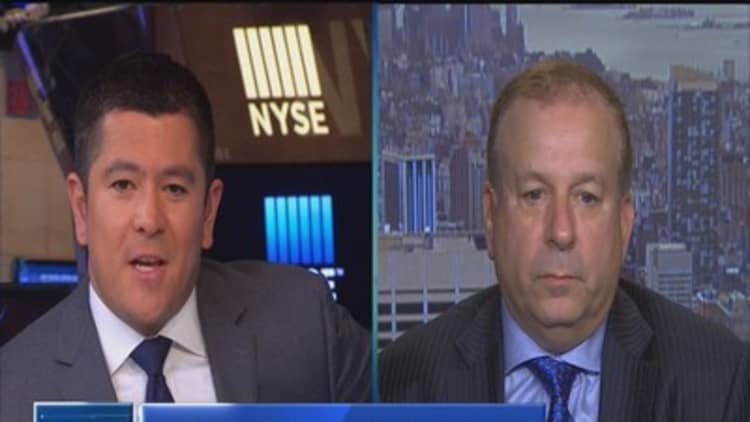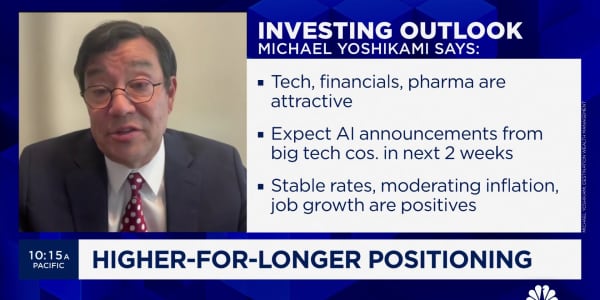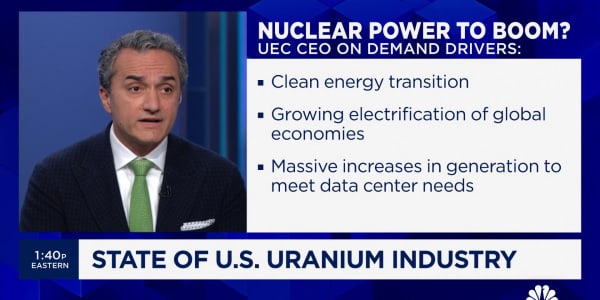
After a rough summer of market volatility and expectations of rising interest rates, bonds are back.
Recent data show the U.S. is economy is cooling, tamping down the Federal Reserve's appetite to tighten monetary policy. That's pushed investors back into fixed income across the spectrum, but particularly back into high-yield.
Mutual funds focused on bonds saw $60.4 billion in outflows from July to mid-October, according to the Investment Company Institute. From July to August alone, bonds had lost 1.3 percent of total assets.
Equity investors also headed for the exits, but at a far slower pace, pulling $25.9 billion. The $15.6 trillion mutual fund industry holds about $6 trillion in domestic equity assets and $3.8 trillion in total bond-related money.
Of late, the money tide has turned considerably.
A look at the more short-term focused $2 trillion exchange-traded fund space shows which way money is heading.
Read MoreBlackRock: Why bonds are better than stocks
Four of the top 10 funds in terms of inflows from Oct. 7-13 came from the bond sector, and two of them were focused on high-yield, or junk. The SPDR Barclays High Yield Bond fund gathered more than $1.1 billion, or about half its total for the year, while the iShares iBoxx $ High Yield Corporate Bond took in $603 million, pulling it out of negative territory for the full year.
The recent popularity of junk goes counter to multiple warnings from Wall Street experts who believe the sector is in trouble due to looming interest rate hikes and declining earnings for companies particularly at the lower end of the credit spectrum.
Activist investor Carl Icahn cautioned in September that investors were buying into products they didn't understand. Bank of America Merrill Lynch strategist Michael Contopoulos called the sector a "slow moving train wreck."
Read MoreCarl Icahn's bold warning about... Carl Icahn?
In a strongly worded note to clients on Sept. 17, Contopoulos contended that "we are in the midst of the beginning of the end of this credit cycle, and we warn investors to tread carefully not try to be a hero into year end."
However, the softness in economic data, particularly as it relates to inflation, coupled with market expectations that the first Fed rate hike won't happen until well into 2016 have inspired at least a momentary burst in high-yield confidence.
Read More The US is closer to deflation than you think
Other funds pulling in money lately include the Vanguard Intermediate-Term Corporate Bond and SPDR Barclays Short Term Corporate Bond, both of which took in more than $300 million over the past week.
The move in money follows better performance.
The popular iShares 20+ Year Treasury Bond, which has $6.5 billion under management, is back near even for the year after being down as much as 7.5 percent in July. The largest fixed income fund, the $26.9 billion ETF, has gained 1.3 percent year to date, outperforming the , which has dropped 3.1 percent in 2015.
Bond issuance remains strong, despite concerns that market liquidity is drying up. About $20.6 billion has been priced in the corporate investment-grade market this week alone, according to Bank of America Merrill Lynch.
"The pricing and performance of the new issues this week indicates the demand for bonds has remained strong despite the broader market weakness," Yuriy Shchuchinov, credit strategist at BofAML, said in a note to clients.
High-quality bonds, in fact, have seen a huge year for issuance despite the continual drumbeat of fixed income fears.
U.S. investment-grade Issuance through the first three quarters of 2015 stood at $570.4 billion, the highest year-to-date tally on record, according to Dealogic. Globally, high-yield volume of $313.1 billion was the third highest on record.






